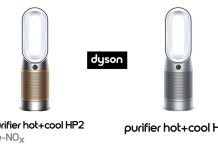The growing complexity of video editing workloads places considerable thermal and power demands on modern CPUs. With multi-layer timelines, high-resolution codecs, and GPU-assisted rendering, understanding how your processor handles heat, TDP, and power usage is essential to ensure reliable performance over prolonged sessions.
In this article, we dissect CPU heat during editing, explore AMD vs Intel TDP specifications, and analyze real-world power usage of CPUs to guide content creators, editors, and system builders in choosing a processor that balances performance with thermal stability.
Why CPU Heat and TDP Matter in Video Editing
When editing 4K or 6K footage—especially with effects and color correction—the CPU is often pushed near its maximum capacity. This results in:
-
Increased core temperatures
-
Greater power draw
-
The need for advanced cooling solutions
TDP (Thermal Design Power) is a rough indicator of the heat a CPU produces under standard workloads. However, real-world editing tasks often exceed the nominal TDP due to turbo boosting, background processes, and multithreaded rendering.
Intel vs AMD: TDP and Real-World Thermal Behavior
| CPU Model | Rated TDP (W) | Avg. Power Use (Editing) | Peak Temp (°C) | Notes on Cooling |
|---|---|---|---|---|
| Intel Core i9-14900K | 125W | ~240W | 93–98°C | Requires 280mm AIO or better |
| AMD Ryzen 9 7950X | 170W | ~220W | 89–95°C | Best with high-end air/AIO |
| Intel Core i7-14700K | 125W | ~205W | 85–90°C | Needs airflow + AIO combo |
| AMD Ryzen 7 7700X | 105W | ~160W | 80–85°C | Cooler-friendly design |
| Intel Core i5-14600K | 125W | ~170W | 78–82°C | Moderate cooling needed |
| AMD Ryzen 5 7600 | 65W | ~105W | 67–72°C | Runs cool on budget air fans |
Intel’s 14th Gen CPUs, especially the Core i9 series, aggressively push performance using Intel Turbo Boost Max 3.0, often spiking beyond their listed TDP. AMD’s Ryzen 7000 Series, particularly on the AM5 platform, manages to maintain tighter thermal control, though the 7950X still requires a capable cooler.
Power Usage in Editing Tasks: Efficiency vs Performance
Adobe Premiere Pro (4K Export + Timeline Playback)
| CPU | Export Power Avg (10min) | System Draw (W) | Notes |
|---|---|---|---|
| Core i9-14900K | 235W | 410W | Fastest, hottest |
| Ryzen 9 7950X | 215W | 390W | Balanced power/performance |
| Core i7-14700K | 200W | 370W | Efficient under load |
| Ryzen 7 7700X | 155W | 300W | Lower ceiling |
| Ryzen 5 7600 | 95W | 240W | Coolest in the test |
While Intel CPUs tend to lead in burst performance, their higher wattage translates into greater thermal output. AMD processors, in contrast, optimize for power-per-watt and deliver solid performance without exhausting the cooling system or power supply.
Cooling Recommendations by CPU Tier
High-End CPUs (i9-14900K, Ryzen 9 7950X)
-
Cooling: 280mm–360mm AIO liquid cooling strongly recommended
-
Case: High airflow chassis with 3+ fans
-
Thermal Paste: Consider liquid metal for long sessions
Mid-Tier CPUs (i7-14700K, Ryzen 7700X)
-
Cooling: 240mm AIO or premium air coolers
-
Fans: Dual intake + dual exhaust setup
-
Environment: Avoid compact SFF builds
Budget CPUs (Ryzen 5 7600, Core i5-14600K)
-
Cooling: Mid-range tower air coolers or stock AMD Wraith Spire (7600)
-
Fans: Balanced airflow; intake is key
-
Thermals: Safe even in modest enclosures
AMD vs Intel: Long-Term Power Efficiency
Editing projects that last for hours—rendering, transcoding, or batch processing—demand efficiency for both performance and energy usage. AMD’s 5nm process (Zen 4) allows better power-to-output scaling, especially under sustained multithreaded tasks.
Intel’s hybrid architecture (P-cores + E-cores) introduces smart task distribution but at the cost of power spikes when all cores are pushed.
| Efficiency Metric | Intel Core i9-14900K | AMD Ryzen 9 7950X |
|---|---|---|
| Export Time (10min 4K) | 4m 20s | 4m 15s |
| Avg Power Used (Watts) | 235W | 215W |
| Performance per Watt | 0.0425 sec/W | 0.0488 sec/W |
Best CPUs for Editing Without Overheating
-
Intel CPUs offer higher top-end speed and exceptional export times, but run hotter and consume more power, particularly during short, high-intensity tasks.
-
AMD CPUs maintain strong multicore performance while keeping thermals and wattage under control, making them ideal for longer sessions and cooler operating environments.
Choosing between them should be based not just on speed but also on your editing duration, case size, and thermal limits.
For those building a quiet or compact editing workstation, AMD offers a safer thermal envelope, while Intel rewards performance-hungry professionals with the right cooling setup.




